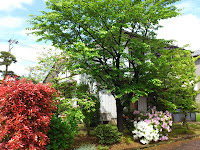Todai or the University of Tokyo could move the start of its academic year from autumn to help it compete with overseas rivals and help students wanting to study abroad.
A school working group proposed in an interim report that the university stop accepting students in April, the tradition in Japan, and shift to a fall enrollment system, which is common abroad.
The university hopes to reach a formal decision by the end of March after each department has studied the proposal. (The Asahi Shimbun, 1/18/12)
I am for the proposal, but my reasoning is a little different than the ones given in the report above. Recently, my daughter has taken many college entrance exams during January and February as her high school life comes to a close and she prepares for her future. In Japan, it is still common for students to take entrance tests to multiple universities.
As her parent, I have had the responsibility to make sure that she gets to these tests at the appointed place and time. However, here in Niigata Prefecture, in winter, there is much snow, trains are often delayed and the roads and highways can be treacherous with ice, snow and slow-moving traffic.
Also, right now, it is cold and flu season. In Sanjo City, where we reside, four public schools have been closed because of an influenza epidemic. Because of this, my family and I have not dined in public or gone anywhere to relax for fear of my daughter getting infected before one of her tests.
In March, things aren’t much better. Not only is there still the danger of snow and infection, but nationally, because of the preponderance of cedar trees, it is the height of the hay fever season. Recently, the amount of pollen in the air has been increasing and some people have had severe problems dealing with this condition.
I’m not sure what kind of pressure my daughter is feeling, but I have felt under pressure just to make sure she is able to perform her best under the most normal conditions as possible. A lot of these problems would be eliminated if the test dates were moved to summer.
The pictures show my house and garden after a recent deep snowfall.
The pictures show a pine tree that has been professionally trimmed similar to a bansai tree and other trees. To protect them from the wet and heavy snows we get here, we had professional gardeners use ropes and long bamboo poles to give them support. Niigata Prefecture is famously known as “snow country.”




















